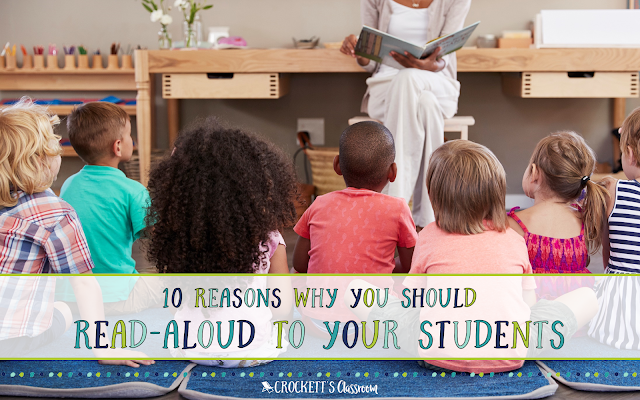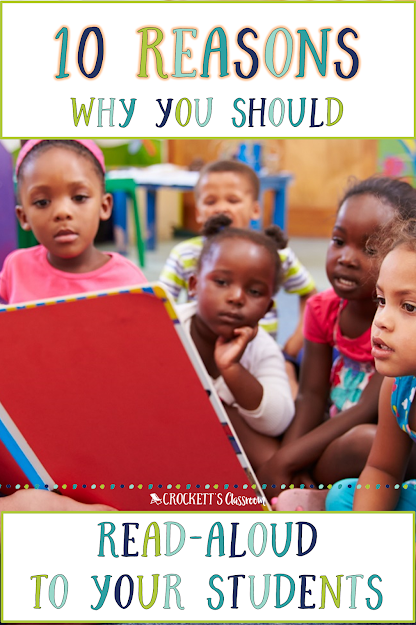Research shows that reading aloud to your child or students is the single most important activity for reading success (Bredekamp, Copple, & Neuman, 2000). Reading aloud is the first step toward building reading comprehension skills. That’s why I hate seeing it squeezed out of the crowded daily schedule in so many classrooms. Before you take out your daily read-aloud, consider these benefits.
Build background knowledge. Our students come from such varied backgrounds we don't always know if they have the schema, or background knowledge, to understand the topic you’re about to teach. You can build that background knowledge with your read-aloud texts. Not only are you giving them basic background knowledge you’ll be gaining a better understanding of your students' past experiences. Through the discussions, you’ll be able to assess how much experience they’ve had with this topic.
Acquire vocabulary. Our listening vocabulary comes first. We learn so many new words when we're listening. When you’re reading aloud, make sure you take time to point out a few important or interesting words. You can even jot the word onto a sticky note, along with the definition, and/or sample sentence. Stick that word on a “Words We Love” poster. You’ll be surprised how many times your students will visit that poster and begin using the words in their discussions, or even their writing. Your students will soon start listening for new words and offering suggestions for your “Words We Love” poster.
Advertise great books and authors. Kids love to read the books you've read aloud to them. They want to experience the story or characters again. Sometimes you need to choose a book that is one of a series, or by an author who has written other books at the same level. Try to have some of these books available for your students to check out to read on their own.
Model fluent reading. Kids learn from role models. As you read you'll be showing them how good readers have a good pace and their voice shows an understanding of the text. Make sure you’re modeling fluency in both fiction and nonfiction text.
Model thinking strategies. Reading aloud is the best time to
show students what good readers are thinking as they read. As you read each day, pick one thinking strategy. Once in a while, pause in your
reading to tell students what you’re thinking.
Tell them something you’ve figured out from the clues the author has
given, or the details that helped you figure out the main idea. It might help if you plan the think-aloud moments ahead of time. Mark the spots you want to stop and share your thinking.
Give students a chance to share their thinking. This mini-tissue box from the dollar store and large wooden sticks are a great way to randomize the students you call on to share their thoughts.
Give students
access to quality literature in a wide range of genres. We all have our
favorite genre. Sometimes students don't know that other
genres even exist. Make sure you choose read-alouds from many different genres. You
never know when you'll spark new interests in your students.
Introduce new topics, concepts in science, and
social studies. Picture
books are a wonderful way to introduce new topics and concepts in the content
areas. Not only do you get to discuss the facts, events, and information, you'll see which students have
strong or weak background knowledge in the area.
It’s fun! Students connect reading
to an enjoyable experience.
How many of you still remember one of your teachers reading aloud to you?
I think if you ask any adult they will tell you that the read-aloud time is one of their fondest
memories from elementary school.
COVID 19 Update, July 2020
With most schools looking at beginning the school year with distance lessons, some publishers have given permission for their books to be read online. School Library Journal has compiled a list of publishers' websites. You need to check with each publisher to see if reading one of their books online is allowed.
Click on this image to go to this extensive list of publishers.
Two of my favorite books to read aloud at the beginning of the school year are by Patricia Polacco. You can click on each image below to check out the free activities for these wonderful books.




























